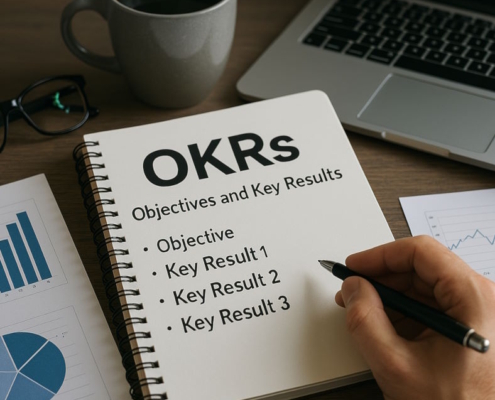What is the difference between a general partnership and a sole proprietorship?
The first thing to do when starting a business is to choose a business model. A company owner can choose to form a partnership with another person or individuals, or they can go it alone (a “sole proprietorship”). Each choice has its benefits, but there are several key distinctions to keep in mind before making a final decision. This article compares and contrasts a sole proprietorship with a partnership, defines both, and provides cases of each.
What are general partnerships?
When two or more people run a company together, they form a partnership. Everyone who invests financially, has an active role in running the company, and is personally liable for its debts is considered an owner. Licensing paperwork is not required of businesses that enter into partnerships. While the federal government does not have a unified set of regulations regarding partnerships, the laws of company ownership vary from state to state.
What are sole proprietorships?
In a sole proprietorship, one person acts as both owner and operator of the firm. When running a business as a single owner, they are personally liable for any debts incurred by their company as well as any legal disputes that may develop. Moreover, they are entitled to any profits made by the company. When dealing with the state and the IRS, the owner or operator of a business is considered to be a single entity.
To indicate they work independently yet use a distinct company name when dealing with clients and customers, many sole proprietors register a “doing business as” name, or DBA. Using a DBA name allows a solo proprietor to do things like create bank accounts.
Comparing Partnerships and Sole Proprietorships
Partnerships and sole proprietorships differ in three fundamental ways:
Organizationally, a sole owner runs their firm by themselves, whereas a partnership comprises two or more people. In order to govern any potential disputes in the future, a partnership might establish an agreement outlining operating parameters and other corporate concerns.
In a partnership, each partner is jointly and severally liable for the debts and obligations of the firm, regardless of how much exposure each member has. The owner of a sole proprietorship is personally responsible for paying off any debts or other obligations incurred by the company.
When it comes to ownership, one type of corporate entity handles all activities independently, while another type of entity, a partnership, has members who all pitch in to run the show. One notable example is a general partnership, in which one partner handles day-to-day operations while the others focus only on capital investment.
Then there is the matter of credibility. Third parties will have a more favorable impression of your company if you form a general partnership. There is no additional safeguard or risk mitigation for a sole proprietor in the event that they decide to leave the business. The additional individuals participating in a general partnership increase the number of safeguards in place. When there are more individuals holding the organization accountable, third parties have more faith in doing business with them. Forming a partnership is a smart move if you want to increase the reputation of your firm.
Because there is no legal distinction between you and your business when you establish a sole proprietorship, your personal tax situation will change. You are required to pay taxes on your gains as if they were personal earnings. General partnerships are not exempt either.
Because your business is not a “corporation,” corporate taxes are not due from any of these organizations. Instead, your revenue will be “passed through” the business. You are personally liable for paying taxes on your business earnings as the owner. If your company is a sole proprietorship, you will need to use Schedule C of your individual tax return to detail the gains and losses of your enterprise. Schedule E and Form 1065 are the two returns that general partnerships are required to file.
Different kinds of partnerships
In business, you may see partnerships like these five examples:
- The general partnership
If you’re looking for a business structure where two people may work together and agree to split everything fairly, including debts, assets, and earnings, a general partnership could be a good option. When problems with liability emerge in a general partnership, the partners are typically on the hook instead than the firm owners. In the event of legal obligations, for instance, all partners are individually liable and may have to pledge their own assets to settle the matter.
- Joint venture
A general partnership with a defined expiration date or dissolution clause is known as a joint venture. Joint ventures are different from traditional partnerships in that they involve two organizations or other legal bodies rather than just two people. Each partner in a joint venture shares equally in the business’s success or failure and in paying off any debts or expenses incurred as a result, just as in a traditional partnership.
- Limited partnership
One partner acts as the general partner in a limited partnership, while the other partners have limited power. Each partner is partially responsible for any debts or losses. While limited partners are only liable up to their original investment, general partners are personally liable for any debts or losses sustained by the company. Like silent investors, they have no hand in running the day-to-day operations of the company.
- Limited liability partnership
When there are more than two individuals involved in a business partnership, an LLC is usually the best choice. Collaboration between a company’s owners can bring its own challenges, such as differing viewpoints on day-to-day operations. Personal responsibility for wrongdoing in a limited liability partnership is severely limited. Partner debts are not the exclusive responsibility of any one party. The deeds of each owner are distinct from one another. Unlike in a limited partnership, all partners have equal say in running the company.
- Limited liability limited partnership
There can be an infinite number of limited partners and more than one general partner in a limited liability limited partnership. Each general partner in an LLP may be personally liable in certain situations. Since limited liability limited partnerships are relatively new, they are not yet legal in all jurisdictions.
Different kinds of sole proprietorships
One can function as a sole proprietor in one of three primary ways, depending on the nature of the services provided and the nature of the connection with the client or business partner. Here are the three main kinds of sole proprietorships:
- Working for oneself
Anyone can set up shop as a company and provide their wares and services to others. As an example, a company owner may offer landscaping services to a group of clients or handle social media marketing for a list of clients. In this case, the person works for themselves.
- Independent contractor or freelancer
To operate as a sole proprietor, you might not be required to submit formal documents for company creation, albeit this varies by state. A sole proprietor is any person who performs work for another business without being officially employed by that business. By providing your social security number on a W-9 form, you will likely be able to have your pay withheld by the company and include them in your yearly tax return when you sign up for this kind of job.
- Franchise
Additional forms of sole proprietorship include franchises. The franchisee, who is also the business owner, buys the rights to use the franchisor’s brand. In return, the franchisee gets promotional materials and help managing the company. In addition, they’ve committed to running the business in accordance with the blueprint the corporation has laid out for the franchise.
Considerations for Establishing a General Partnership vs. a Sole Proprietorship
You should weigh the benefits and drawbacks of general partnerships and sole proprietorships to determine which business structure is best for your company.
Advantages of Operating as a Sole Proprietor
- Complete adaptability and command of company processes
- Own 100% of the company’s earnings
- A company’s most basic legal form
- Simply submit one tax form
Negatives of Operating as a Sole Proprietorship
- You have limitless personal responsibility for any debts or liabilities incurred by your company
- Financial institutions are wary of lending to sole proprietorships
- Viewed by outside parties as having lower credibility
- In the event that your business assets are insufficient to cover a claim, your creditors may seek recourse to your personal assets and/or properties
- Raising funds over a long period of time is more challenging
- Must pay self-employment tax on any money earned by the firm
The Benefits of Establishing a General Partnership
A few broad benefits of forming a partnership are as follows:
- Each partner is equally liable for their share of the company’s debt and any losses
- Together, partners can share responsibilities and access to shared resources
- Third parties view it as more credible
The Negatives of a General Partnership
General partnerships have a number of drawbacks, such as:
- Partners may not get the same share of the profits
- Each partner is responsible for the debts of the others.
- Two tax returns to submit






























